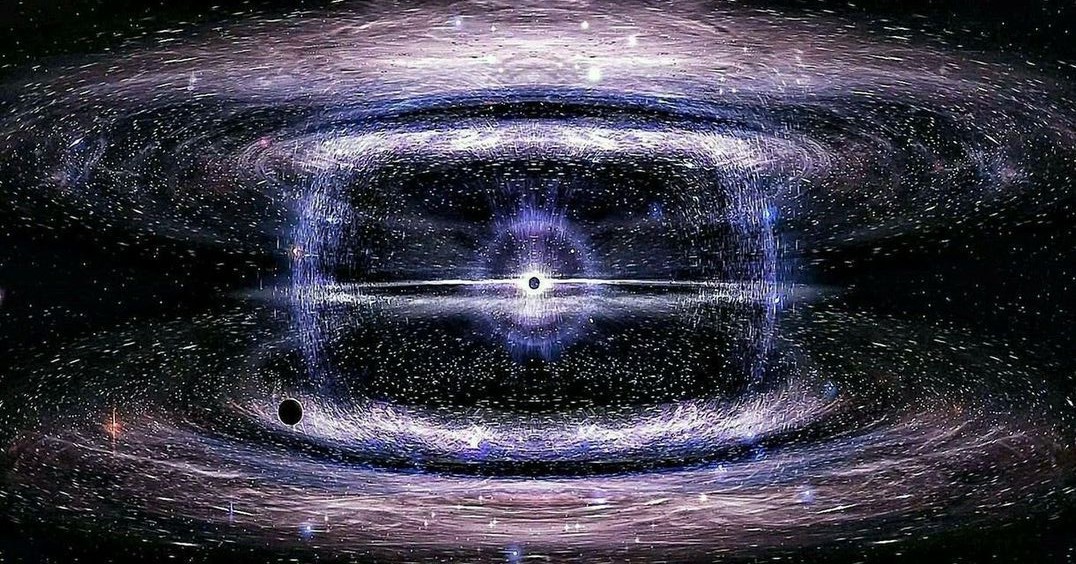The Singularity of Big Bang
One of the questions that always arises and is still unanswerable with confidence is the birth of our Universe. We know we all exist right now, and so does our Earth, but how do we exist on a planet that exists in a Solar System within a massive Galaxy in an infinitely large Universe? While searching for the answer to this question, I found many possible scientific explanations out of which only one is seemed worthy enough to discuss here.
But first let me take you back to the 1960s, when Stephen Hawking, working with other mathematicians, developed the Hawking-Penrose Singularity Theorems, which showed that under certain conditions, singularities would form in space-time as a result of gravitational collapse. He supported the idea of the Big Bang by observing the universe collectively. We cannot just feel but track that the universe is expanding continuously. If we try to rewind it a bit, we will observe that the universe is getting closer and closer and eventually converges to a single point, known as the Big Bang, which is thought to have occurred about 13.8 billion years ago. The then, it was in a very hot and dense state, where very high energy density stored up in some sort of primordial field ,and after the Big Bang(blast) forcing it to expand rapidly. This can be proved by the redshift of distant galaxies, which strongly supports this theory. The redshift occurs when light from distant galaxies shifts to longer (and this means redder) wavelengths, which can only happen when they are moving away from us—a hard concept to swallow indeed :)
Let’s make it easier to gulp down the notion that what a singularity actually is.
Take this "Singularity" as a point in space where the density of matter and the curvature of space-time break down, and the laws of classical physics no longer apply, as mentioned in Stephen Hawking's book A Brief History of Time. For a metaphorical instance, imagine you have a balloon (you can buy one and try this analogy on your own at home). As you blow air into the balloon, it expands and grows in size gradually as air fills it. This expanding balloon represents the universe growing over time. Just as the balloon’s surface expands outward, this is the universe that has been expanding since the Big Bang. Now, hold yourself back and gradually release the air from the balloon until it’s completely deflated and all the air inside is squeezed out. At this point, the balloon is a small and compressed object with all its material (in this case the air) concentrated in a very limited space. For the context of the universe, this deflated balloon represents the singularity of the Big Bang—where all the universe’s matter and energy were compressed into an infinitely small and dense point. When you start inflating the balloon, you’re simulating the Big Bang event. As you blow air into it, you’re causing the universe to expand from that initial tiny, dense state. This expansion from the "deflated balloon" state is similar to how the universe has expanded from the singularity after the Big Bang. As the balloon expands, its surface stretches out. Similarly, the surface of the balloon represents the observable universe. The more you inflate the balloon, the larger the surface area becomes. This stretching surface represents how galaxies are moving away from each other as the universe continues to expand. The balloon’s surface is a good analogy for how, in the Big Bang model, the universe doesn’t have an edge or boundary; it just expands in all directions. There’s no center or edge to the universe; it’s expanding uniformly.

Another piece of evidence for the Big Bang is the Cosmic Microwave Background Radiation, which is faint radiation detected by satellites. This radiation of different wavelengths is a remnant of the hot, dense state of the early universe and strongly supports the model described by Stephen Hawking. Do you see what I’m getting at? It means that the wavelength we received are old enough to give us the idea how young our universe actually is. Plus considering the redshift explanation, if we placed a camera at a 90-degree angle and rewound time, we would see that the galaxies that are now moving away from us were once much closer. The further back we go in time, the nearer they become, eventually converging at the point of singularity.
However, what existed before the Big Bang? This question still bothers me and is controversial . I tried to find an answer of it in another book of Stephen Hawking's which was 'Brief Answers to the Big Questions' where he states that we have only four dimensions to measure anything: length, width, depth, and time. Yes! Time serves as an integral state of any medium when it comes to explaining anything related to the cosmos. So, cutting to the chase, our beloved Stephen mentioned that the time actually started after the Big Bang, and before that, nothing existed at all—not even time. Thus, anything that exists beyond the fourth dimension of time does not actually exist in reality. And anything that does not exist should not be questioned either. It’s kind of odd, but it is what it is.
And also, in quantum mechanics, the concept of a "vacuum" or "nothingness" isn't completely empty. Instead, it's a seething foam of energy where particles can spontaneously appear and disappear. The Big Bang could have been a result of such a quantum fluctuation, where an intense fluctuation in a vacuum led to the rapid expansion of space and time, creating the universe to which we belong, a place that holds our past, our future, and the wonder of our existence.
Author and Researcher: Mohsin Ramzan